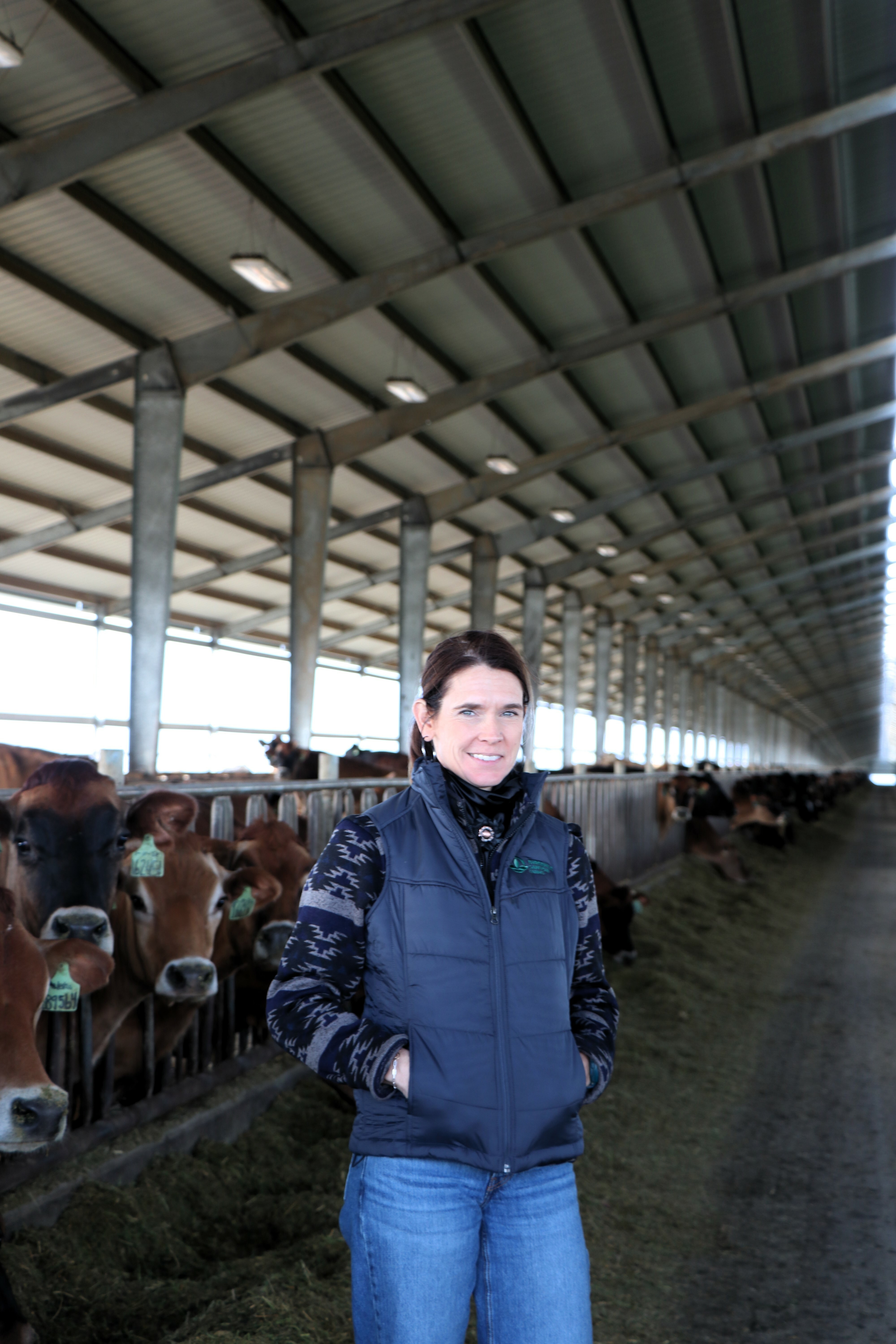Reuse and Repurpose
| Posted in: Land Sustainability & Stewardship
Traditional forages like alfalfa hay, triticale silage, and corn silage, are one component of a healthy diet. Our herd, including the dairy and youngstock, utilizes many other feeds including grain corn, soybean meal, canola, carrots, onions and potato by-products.
Feeding cattle byproducts from vegetable processing is an effective way to reuse and repurpose. At Threemile, it's just one tool we use to responsibly manage our resources.
We grow a wide variety of crops. Some (i.e., alfalfa, triticale) are used directly by the livestock operations. Others (i.e., potatoes, carrots) are sent to processing plants, eventually making their way back to us in another form. Our farm is 20 minutes from potato and onion processing locations, which results in a steady supply of these byproducts to the dairy or youngstock.

Ruminant animals, like cattle, have a complicated digestive system, and their nutritional needs vary greatly as they grow from calves to mature, lactating cows. The food that cows consume plays a significant role in milk production and milk quality. Having a balanced ration for our cattle at all their different stages of life is essential to the success and health of our herd, which is why we have a full-time nutritionist.

Dr. Ehrin Dawson is our on-farm nutritionist. Dr. Dawson has a PhD in Animal Science (Lactation Biology) from The University of Arizona. As the Threemile nutritionist, she has on average 10 different rations to manage every day. With the help of a knowledgeable feed team, we can feed high-quality rations to our herd and in turn get a high-quality milk product with the right fat and protein balance to make cheese for our customer.
Dr. Dawson carefully monitors the cattle and formulates the appropriate ration to support each animal’s needs. Our lactating cows, for example, are fed a high-energy ration to support milk production, while our youngest calves get special calf grain to go along with their milk and ease them onto solid food.
In a typical year, about 50% percent of the feed for the dairy livestock is grown on-site. We grow alfalfa, triticale, corn silage, and high moisture corn for the dairy and youngstock. Growing these crops ourselves protects us from market fluctuations and gives us more control of forage quality in the diets. In addition, we feed the byproducts from processing our potato, onion, and carrot crops to the appropriate groups of cattle.
After potatoes are processed, they are about 65% starch. In the ruminant digestive system, the starch converts well into energy for milk production. Carrots and onions are about 35% sugar and are a good source of energy for growth in our youngstock.
